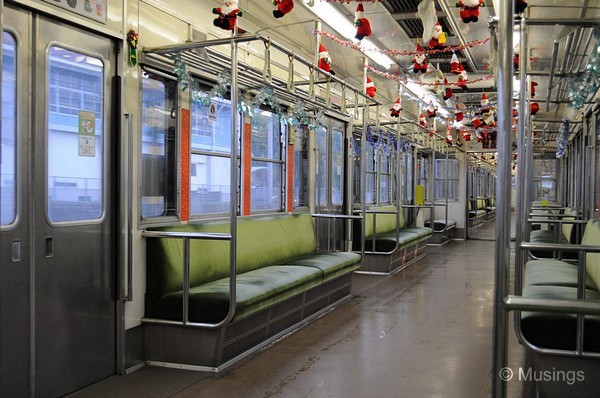Matt and I were having an MSN chat the other day while I was still in Kumamoto, and one part of it went like this:
Matt: “It is a shame you won’t get to see Nagasaki, though.”
Me: “Yeah. But Ling is now determined to visit Hokkaido. I think she feels it’s crazily unfair I’m in Japan and she’s in Singapore.:)
Matt: “Haha, you think? Duh! : ) Frankly, I think it’s unfair you’re in Japan and I’m in the US!”
The visit and exchange program to Kumamoto has been an incredibly enriching experience. It’s not merely this whole thing about visiting another country and a culture you read about so much in media, and so pervasive among youth in Singapore even.
Rather, living and teaching in Kumamoto for an intensive winter program has let me intently interact with my Japanese counterparts and students on their own home ground.
Moreover, I’m glad that my first visit to Japan has not been to a place like Tokyo or Hokkaido. Kumamoto isn’t a tourist prefecture, with the number of tourist-y ‘sights’ amounting to less fingers than you’ve got on one hand. And throughout my 9 day stay, the number of Caucasians I saw numbered about 2 – maybe – altogether.

But what I saw and experienced I think is an accurate representation of what life in Japan is like for the average Japanese, or as much as I could experience from a 9 day stay. It’s a taste of the country: not artificial and intended only for tourist consumption, as would be inevitably the case to some degree in the tourist-y cities of Japan. One of the most telling signs was the near absence of English translations everywhere: including restaurant menus, maps and street sign posts. Kumamoto City just isn’t regarded as a city for travelers from outside Japan. Heck. Even English communication with their frontline reception staff in the hotel and embedded restaurants was crazily difficult. It just goes to show how unaccustomed was the city to non-Japanese travelers.
And aside from the amazing business-class dinners I had everyday, I walked and commuted by train to work, returned during peak hour traffic, and walked some more back home (hotel) every night like the average Japanese Joe. If it wasn’t for the fact that I was obviously under-dressed for winter with just thin long pants, a short-sleeved shirt and my Karri Valley Resort windbreaker, I would have looked almost like a local – until I was spoken to in Japanese and my pathetic response would be “I’m so sorry but I don’t understand!”
Continued in the next post!
Recent comments